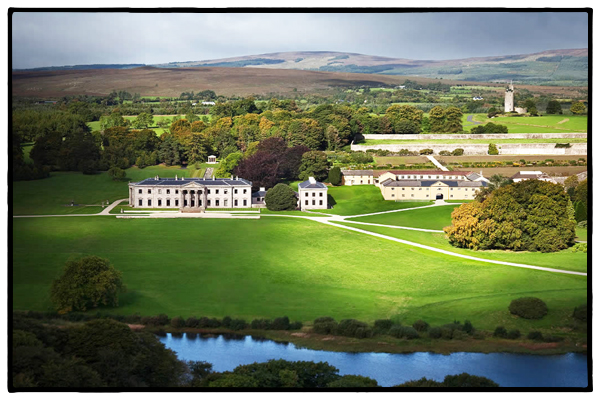
Ballyfin Demesne with the lake in the foreground and the stone tower folly in the right hand corner.
If you go for a late afternoon property tour with Jim Reynolds, the landscape designer (and general manager) of Ballyfin, you’ll hear him constantly refer to the “Ballyfin domain.”
Or at least, that’s what I thought he was saying. Actually he’s saying “Ballyfin demesne.” Which is pronounced pretty much like domain, the French word from which it is derived (the “s” in demesne is silent).
Demesnes are pretty much English and Irish inventions. Elizabeth Bowen, the Irish novelist and short story writer, called Irish demesnes “house islands,” which seems like an apt description.
A demesne is sort of an enclosed world—stone walls surrounding hundreds and hundreds of landscaped acres and, in the middle, a big house. As Jim summed it up to me, “Lakes, towers, sham ruins, grottoes, rustic buildings, gazebos, formal gardens—that sort of thing.”
They were particularly popular in the 18th and 19th century when, according to one Irish source, as much as 5% of all the land in Ireland was considered a demesne. The idea was that you built your estate—like Ballyfin—out in the middle of nowhere, surrounded it with high walls, and then the peasants who would come to feed and bathe and dress you would establish themselves nearby. Not on the estate, mind you. But just outside the walls. So you didn’t have to see them.
So a baron like Sir Charles Coote who built Ballyfin, could wake up in the morning and, while scratching his belly, look out on the 36-acre man-made lake in front of his house and his acres and acres of woodland and not have this idyllic vision marred with peat smoke from tiny thatched cottages and peasant women hanging laundry.
Imagine.
Tags: Ballyfin, Ireland, Irish hotels
Comments are now closed.

1 comment